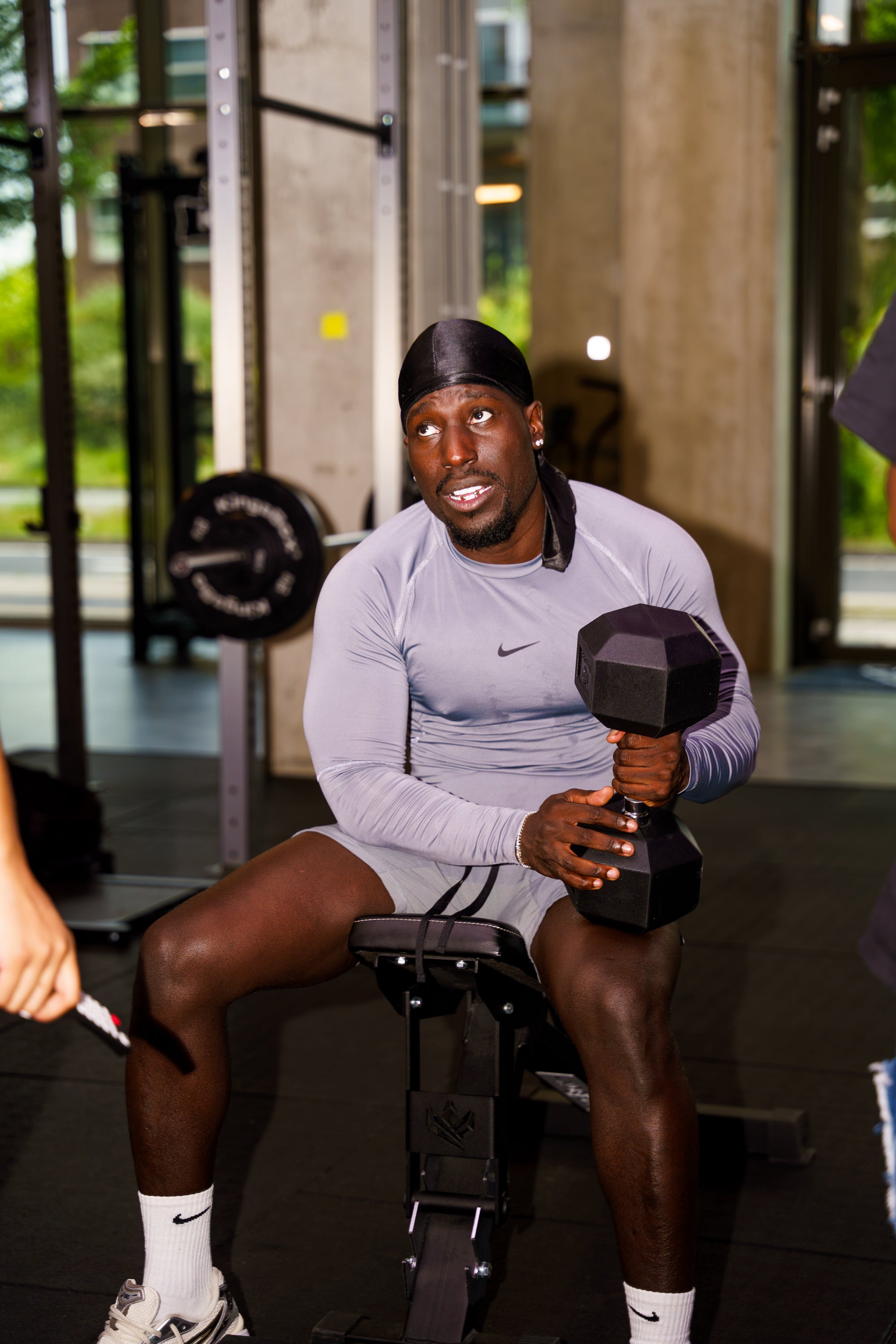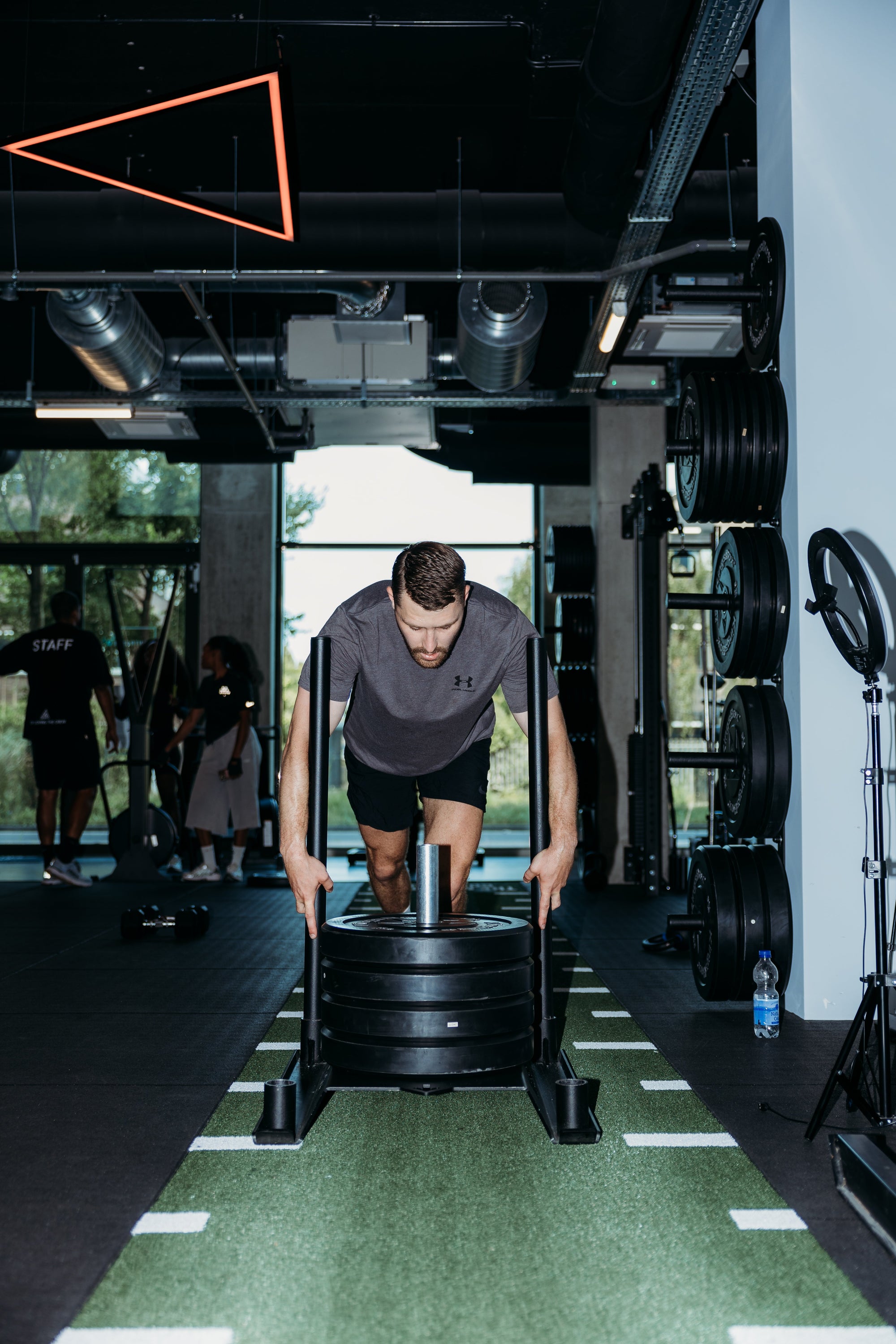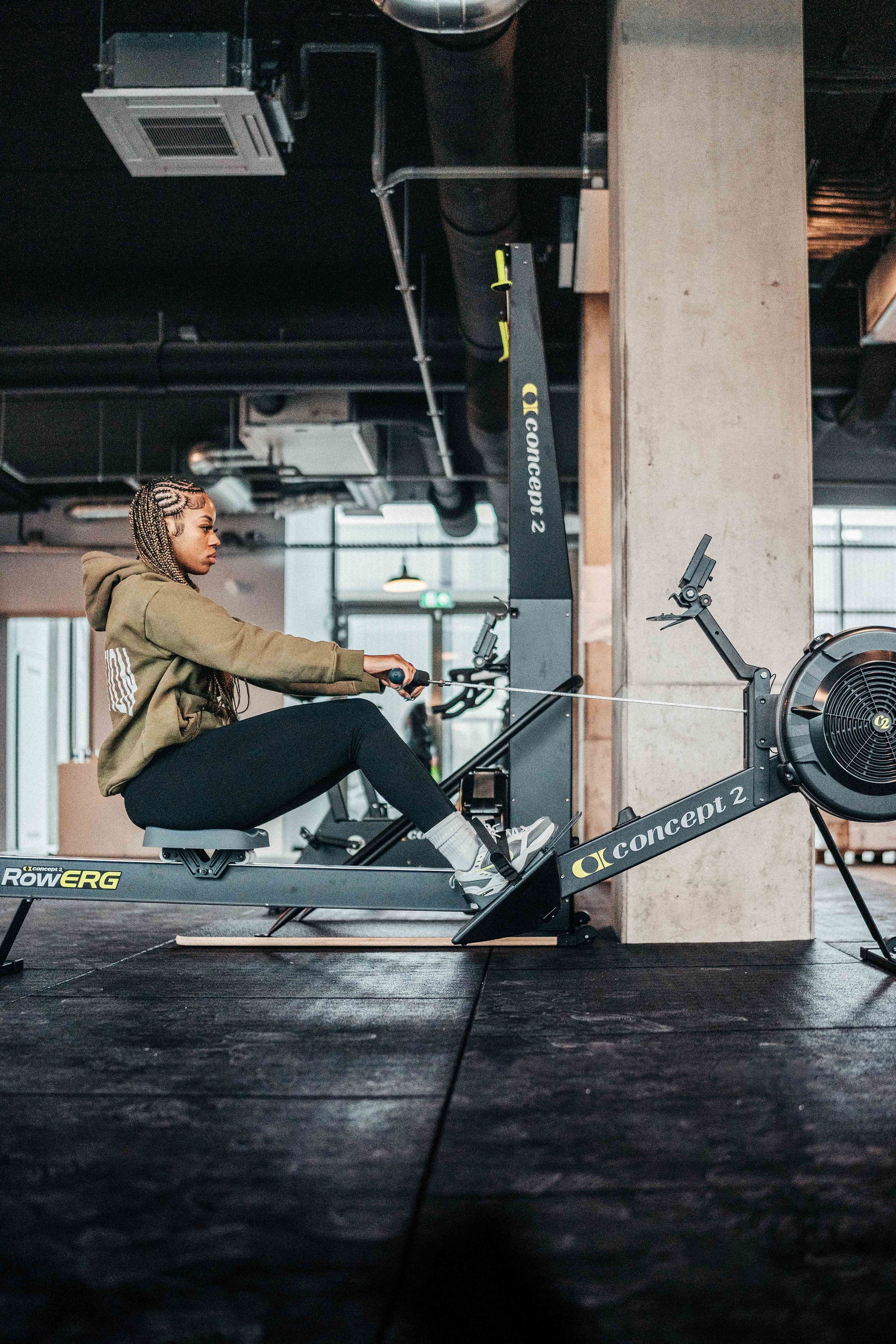Recovery Tools and Techniques: Optimizing Your Post-Workout Routine for Hyrox
Champion, after a grueling Hyrox workout, recovery isn’t just a nice-to-have—it’s a non-negotiable part of your training that can make the difference between a good performance and a game-changing one. At BallinFit, we know that the secret to long-term success lies in how well you recover. With insights from our Hyrox head coach, Zwayder, and a deep understanding of cutting-edge recovery tools and techniques, this guide will show you how to optimize your post-workout routine so you can train harder, recover faster, and come back stronger every time.
The Crucial Role of Recovery in Hyrox Performance
Imagine your body as a high-performance machine. Every intense workout creates microscopic tears in your muscles—tiny signals for repair and growth. Recovery is when these repairs happen. Without proper recovery, your muscles don’t get the chance to rebuild, which can lead to fatigue, reduced performance, and even injury.
Why Recovery Matters:
-
Muscle Repair and Growth:
Recovery allows your muscles to rebuild stronger, helping you gain power and endurance.
-
Enhanced Performance:
Proper recovery means you’re better prepared for your next high-intensity session—sustained energy and improved technique become the norm.
-
Injury Prevention:
By allowing your body to rest, you reduce the risk of overuse injuries and chronic fatigue.
-
Mental Resilience:
A well-rested mind is more focused and ready to tackle the challenges of a Hyrox race.
Coach Zwayder sums it up perfectly:
"Recovery is not downtime; it’s the secret sauce that transforms hard work into peak performance. When you invest in recovery, you're investing in every victory to come."
Top Recovery Tools Every Hyrox Athlete Should Use
To maximize your recovery, you need the right tools. Here are some of the most effective recovery tools that can be seamlessly integrated into your post-workout routine.
1. Foam Rollers
Benefits:
- Improves Blood Flow: Enhances circulation to deliver nutrients to tired muscles.
- Breaks Up Knots: Helps to relieve muscle tightness and break down adhesions in the fascia.
- Increases Flexibility: Promotes muscle elasticity, which can improve overall range of motion.
How to Use It:
- Quadriceps Roll: Lie face down with the foam roller under your thighs and slowly roll from your hip to your knee.
- Upper Back Roll: Lie on your back, place the roller under your shoulder blades, and roll gently to release tension.
- Calf Roll: Sit with your legs extended, place the roller under your calves, and roll up and down.
Pro Tip:
Spend 1–2 minutes on each muscle group. Adjust pressure by using your body weight—less weight for sensitive areas, more for deeper massage.
2. Massage Guns
Benefits:
- Targeted Relief: Delivers deep-tissue vibrations that relieve muscle soreness and stiffness.
- Increases Range of Motion: Reduces muscle tightness, making it easier to perform your next workout.
- Quick Recovery: Provides a rapid solution when you’re short on time.
How to Use It:
- Focus on Sore Areas: Glide the massage gun over your muscles for 30–60 seconds per area.
- Adjust Intensity: Start at a low setting and gradually increase if you need more pressure.
Pro Tip:
Avoid using it directly on bones or joints. Instead, focus on the muscle belly for effective relief.
3. Compression Garments
Benefits:
- Enhances Circulation: Compression helps improve blood flow, which aids in the removal of metabolic waste.
- Reduces Swelling: Helps to minimize inflammation post-workout.
- Accelerates Recovery: Supports muscle recovery by reducing vibration and fatigue during activity.
How to Use It:
- During Recovery: Wear compression sleeves, socks, or full-body garments after workouts to help your muscles recover.
- During Training: Some athletes find benefit in wearing compression gear during workouts to reduce muscle oscillation and improve performance.
Pro Tip:
Invest in high-quality compression garments that offer the right level of pressure without compromising comfort.
4. Cold and Heat Therapy Tools
Benefits:
- Cold Therapy: Reduces inflammation and numbs muscle soreness. Ideal immediately post-workout.
- Heat Therapy: Increases blood flow and relaxes tight muscles. Best used after the initial cold therapy phase.
How to Use Them:
- Ice Baths or Cold Packs: Immerse in an ice bath for 10–15 minutes or apply cold packs to particularly sore areas immediately after training.
- Heating Pads or Warm Showers: Use heat therapy later in the recovery process to relax muscles and promote circulation.
Pro Tip:
Alternate between cold and heat therapy for a contrast effect. This can further enhance circulation and speed up the recovery process.
5. Stretching Straps and Resistance Bands
Benefits:
- Assists in Deep Stretching: Helps you hold stretches longer and more effectively, targeting specific muscle groups.
- Improves Flexibility: Aids in gradually increasing your range of motion.
- Supports Active Recovery: Provides gentle resistance that can be used during cool-down routines.
How to Use Them:
- Hamstring Stretch: Loop a stretching strap around your foot and gently pull to deepen the stretch.
- Shoulder Stretch: Use a resistance band to pull your arm across your chest, targeting the shoulder muscles.
Pro Tip:
Incorporate these tools into your static stretching routines for a more controlled and deeper stretch.
Effective Recovery Techniques to Complement Your Tools
While the right tools are essential, the techniques you use are just as important. Here’s how to build a comprehensive post-workout recovery routine:
1. Active Recovery
Active recovery involves low-intensity exercises that help maintain blood flow and promote muscle repair without adding additional strain.
Examples:
- Light Jogging or Walking: Keep your heart rate moderately elevated to aid in the removal of lactic acid.
- Yoga or Stretching Sessions: Engage in gentle yoga flows or static stretches to help your muscles relax and recover.
- Swimming: Provides a full-body, low-impact workout that can soothe sore muscles and improve circulation.
How to Integrate:
Schedule active recovery sessions on days following intense workouts. Even a 20–30 minute session can make a significant difference.
2. Static Stretching and Mobility Routines
Static stretching after your workout can help lengthen tight muscles and increase flexibility. Incorporate these stretches into your cool-down:
- Seated Forward Bend: Targets hamstrings and lower back.
- Chest and Shoulder Stretch: Helps release tension built up from upper-body exercises.
- Quad and Calf Stretches: Essential for lower-body recovery after sprinting or cycling.
How to Integrate:
Hold each stretch for 20–30 seconds and repeat 2-3 times for maximum benefit.
3. Nutrition and Hydration
Recovery is not just about physical tools—what you eat and drink plays a crucial role.
Post-Workout Nutrition:
- Protein and Carbs: Within 60 minutes of finishing your workout, consume a meal or shake that combines lean protein (for muscle repair) with complex carbohydrates (to replenish energy stores).
- Hydration: Rehydrate with water and electrolyte drinks. Monitor your fluid intake to ensure you’re replacing lost fluids.
How to Integrate:
Plan your post-workout meal and hydration strategy as meticulously as your training routine. Consider keeping a small recovery snack and water bottle in your gym bag.
4. Quality Sleep
Sleep is when your body truly repairs itself. Aim for 7–9 hours of quality sleep each night. Develop a sleep routine that might include:
- Wind-Down Rituals: Reading, meditating, or listening to calming music before bed.
- Consistent Sleep Schedule: Go to bed and wake up at the same time every day to regulate your body’s internal clock.
Integrating Recovery into Your Weekly Routine
To get the most out of these tools and techniques, it’s essential to build recovery into your overall training plan. Here’s a sample schedule:
Monday (Post-Workout):
- Immediate Recovery: Cool down with static stretching and foam rolling (5–10 minutes).
- Active Recovery: A light walk or gentle yoga session for 15 minutes later in the day.
Tuesday (Recovery Day):
- Focus: Use this day for deeper recovery. Consider a session with cold therapy (ice bath or cold packs) followed by heat therapy (warm shower).
- Nutrition: Eat a balanced, nutrient-dense meal to aid muscle repair.
Wednesday (Post-Workout):
- Recovery Tools: Use your massage gun on sore muscles and follow up with a session of foam rolling and stretching.
- Hydration: Keep hydrating throughout the day; track your water intake.
Thursday (Active Recovery):
- Light Activity: Engage in a low-impact activity like swimming or a relaxed cycling session to maintain blood flow.
- Stretching: Incorporate static stretching with the help of stretching straps for 10–15 minutes.
Friday (Post-Workout):
- Tool Focus: Utilize compression garments post-workout to reduce inflammation and muscle vibration.
- Recovery Techniques: End your session with a combination of active recovery and foam rolling.
Saturday (Mixed Recovery):
- Recovery Routine: Combine a session of yoga flow for flexibility with a brief session of cold therapy if needed.
- Reflection: Keep a training journal noting how your recovery felt and any improvements in flexibility or reduced soreness.
Sunday (Rest Day):
- Full Rest: Allow your body to completely recover. Use this day for mental relaxation and preparing for the next week of training.
- Sleep Focus: Ensure you get an extra hour of sleep to fully restore energy levels.
Coach Zwayder’s Top Recovery Tips
Our Hyrox head coach, Zwayder, emphasizes that recovery is as strategic as the workouts themselves. Here are some of his insights:
- “Don’t view recovery as a break from training—it’s an essential part of the process. The right recovery tools and techniques will have you coming back stronger every time.”
- “Invest in quality tools like foam rollers and compression gear. They might seem like small details, but over time, they make a huge difference in performance and injury prevention.”
- “Listen to your body. Use technology to track your recovery metrics and adjust your routine accordingly. If something feels off, tweak it before it becomes a problem.”
Coach Zwayder’s approach is all about balance—pushing hard in your workouts while giving your body the tools it needs to repair and grow.
Tracking Your Recovery Progress
It’s vital to monitor how effective your recovery strategies are so you can adjust and improve over time. Here are some ways to track your recovery:
- Use a Training Journal: Document how you feel after workouts, any muscle soreness, and your performance in subsequent sessions.
- Leverage Technology: Use fitness trackers or recovery apps to monitor metrics like resting heart rate, sleep quality, and even muscle oxygen levels.
- Set Benchmarks: Regularly perform a Hyrox simulation or specific recovery tests (like flexibility tests) to see if your recovery techniques are paying off.
By keeping track of these factors, you can fine-tune your recovery routine, ensuring that each session brings you closer to peak performance.



